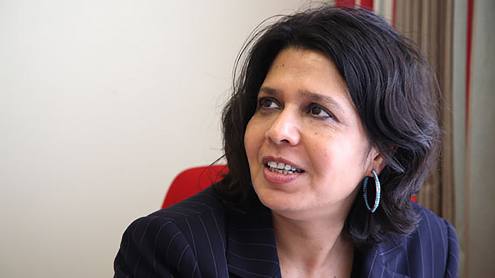I’ve used a joke for a long time about the financial markets being run by a man and his dog. The man is there to feed the dog. The dog is there to stop the man from touching the computers. As with all jokes, there is some truth to this. From programme trading in the 1990s to algorithmic trading in the 2000s to high-frequency trading in the 2010s, we continually push the envelope of how systems work. Eventually all trading could take place from machine to machine, with no human hand involved. However, humans will still be managing the machines, so human logic and irrationality will always be part of the system.
It reminds me of the question that often comes up in such discussions: if everything was traded electronically, we would have reached near-perfect markets, right? Perfect markets are where all traders know all the facts about all the trading taking place at any time. We are nearing that situation, but we will never get there. This is because the systems are programmed for trading and are subject to human failures, as we have already seen on multiple occasions, the most notable being the US 'Flash Crash' of 2010.
Equally, even if we iron out such failures, the markets are distorted by who owns the biggest system. This was demonstrated during the race between the bulge bracket brokers to ensure their server farms were co-located with the stock exchange systems during the low latency wars at the end of the last decade. The result is that whoever gets the trade first gets the trade first, and that is why computing power is what decides which trading firm will win or lose.
Stronger or weaker?
The next wave of automation is already happening: automated trading is moving beyond equities and foreign exchange into more complex and exotic derivatives. Right now, robo-advisers and auto-traders are building the globally connected financial network of integrated and automated systems. The question is, as we remove more and more humans from the processes, will markets become more or less robust? After all, if we can have systemically important financial institutions, we can equally have systemically important financial networks, and we have. For example, the Flash Crash saw billions of dollars wiped off the value of companies in seconds due to a failure of the high-speed networks. Should such a crash ever occur on a globalised basis through interconnected networks of systems, we would have a real problem.
This is the question the banking community needs to ask as we try to move towards real-time clearing and settlement using blockchain and other technologies. Is it actually in our interests to have real-time clearing of billions of dollars of trading per second, or is it better to build some artificial gaps in the systems and networks to ensure we clear only what should be cleared?
Reading the tea leaves of the conversations I’ve been having about blockchain for clearing and settlement, my suspicion is that there will always be a delay for the very reasons given. You cannot have billions of dollars of exposure and risk in a real-time structure when markets are still, obviously, vulnerable to human error.
Of course, one day machines will learn to programme themselves, so you never know, but I would be surprised we get to the stage of a real-time clearing and settlement system in my lifetime, or at least one that is resistant to market failures.
Chris Skinner is an independent financial commentator and chairman of the London-based Financial Services Club.






